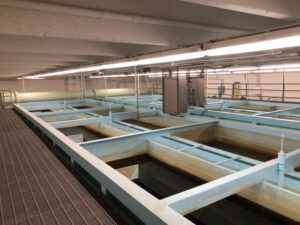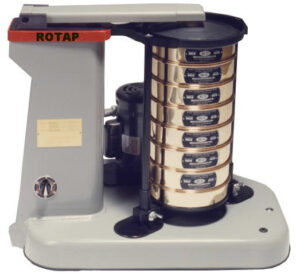Safer Swimming: Years of Water Research, Now Available To You
 Ceralite Installation at RCWD
Ceralite Installation at RCWD
Congratulations are in order to South Dakota’s Randal County Water District—they recently installed Ceralite in their Lake Andes Water Treatment Plant! The facility is a 6.0 MGD plant that draws its raw water from the Missouri River and runs close to capacity during summer months. Ceralite technology will help the plant run at maximum capacity with longer filter runs and lower head loss values. Plus, the reduction in backwash waste will help conserve precious finished water.
Wateropolis Technology Corner: Size Matters

When specifying and procuring filter media, a common technical concern is effective size (ES). When we purchase a filter media with an ES of 1.0 mm, we know the sieve screen passes only 10% of the media sample (called the d10 value). Why does this matter? Because 90% of the media sample was retained on or above the 1.0 mm sieve in a stack of sieves. The 1.0 mm sieve will be at the bottom of a sieve stack with perhaps as many as 13 sieves above it. In theory, the ES could help guide us toward under drain configurations that improve media retention so that less filter media passes through to service.
But what happens when the media is predominantly larger than 1.0 mm? What is our backwash rate to ensure fluidization?
This is where uniformity coefficient (UC) comes in. More on this in our next post. Stay tuned!
